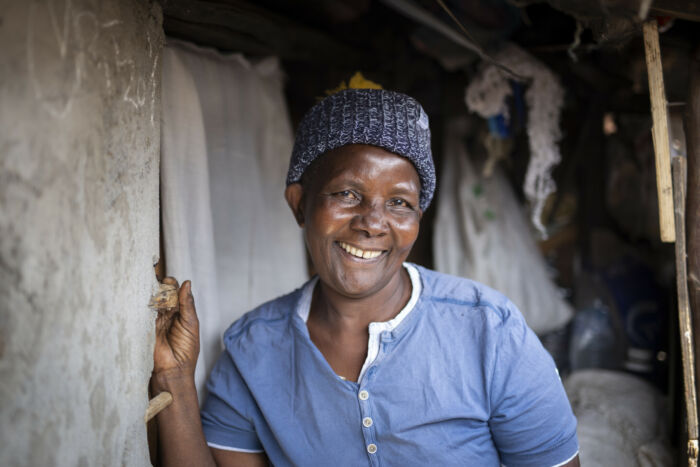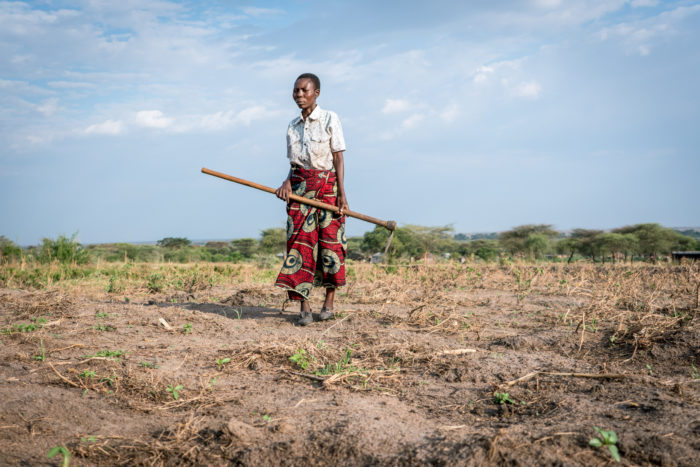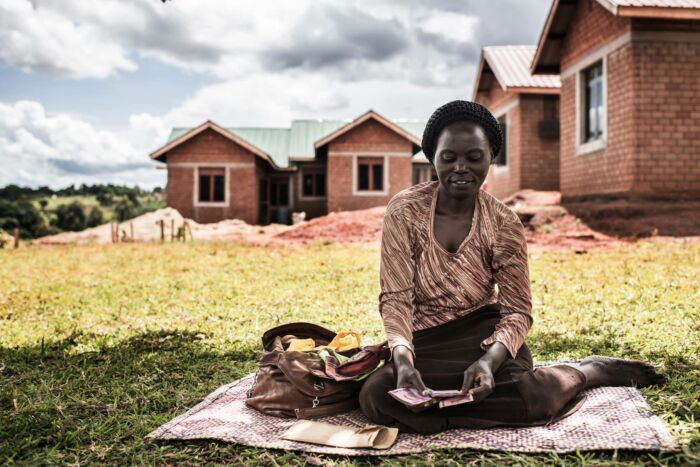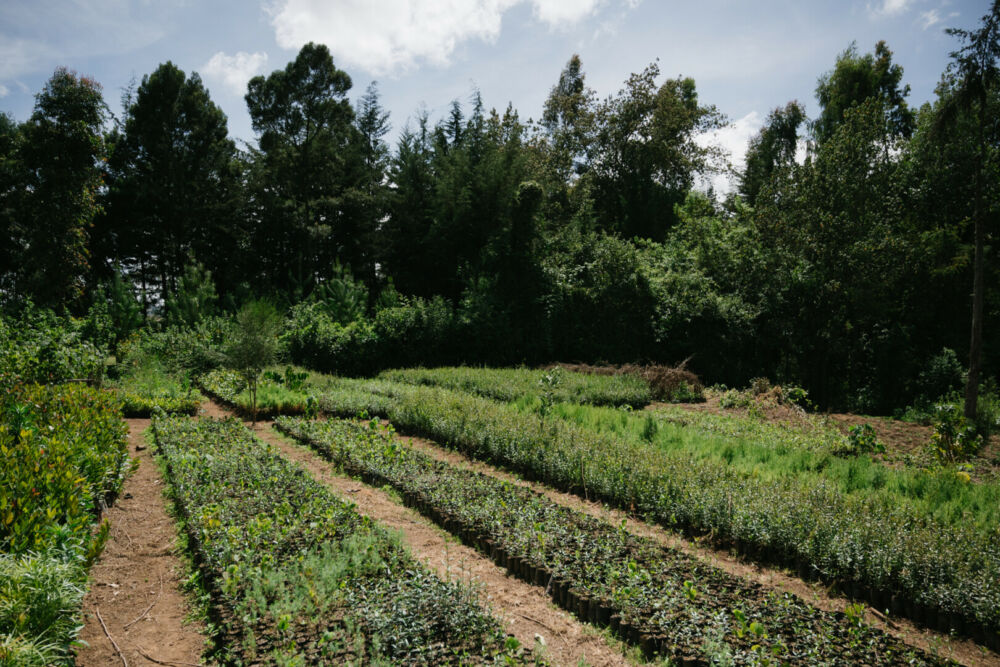Kenya
Kenya, with a population of 56.3 million, faces significant challenges in poverty and food insecurity. Over 40% of Kenyans live in extreme poverty, and the country is still working to improve maternal, infant, and young child nutrition (MIYCN).
We Effect’s regional office for Eastern Africa is located in Nairobi, the Capital of Kenya. In Eastern Africa, we operate within two fields; right to food and adequate housing.
Our work promotes and supports gender equality over all. In Kenya, we focus on strengthening the ability of smallholder farmers to adopt sustainable farming methods, provide food for their families and live of the sale of their products. This is done by increasing agricultural productivity and income, particularly for women, by better access to markets and promoting value addition.
One focus area is to ensure that women, smallholder farmers, and other marginalized groups can save and borrow money as well as plan their finances. Meeting the youth unemployment crisis with training on entrepreneurship, agribusiness, and financial services is also an important part of our work.

In both urban and rural Kenya, we promote the right to adequate housing and access to and control of the land. Our partners in the housing sector support the homeless to form cooperatives and methods for saving, as well as advocate for decent housing for all.

Kenya, with a population of 56.3 million, faces significant challenges in poverty and food insecurity. Over 40% of Kenyans live in extreme poverty, and the country is still working to improve maternal, infant, and young child nutrition (MIYCN). While Kenya is making progress in reducing stunting and achieving exclusive breastfeeding rates, anemia among women remains a concern, affecting 28.7% of women aged 15 to 49. Additionally, 11.5% of infants are born with low birth weight, and 4.2% of children under five suffer from wasting.
Kenya also grapples with high levels of internal displacement, primarily due to disasters like droughts and floods. In 2023, there were 649,000 internal displacements, the highest number recorded since 2008. Conflict and violence also contribute, with 7,700 displacements in 2023, mainly due to communal violence and Al-Shabaab attacks.
The country’s vulnerability to climate change is significant, with 80% of its land being arid or semi-arid. Climate-related disasters cause economic losses estimated at 3% of GDP. Kenya’s Nationally Determined Contributions (NDC) aim for a 32% reduction in greenhouse gas emissions, with 13% of funding to come from domestic resources.
Gender inequality remains a pressing issue. Despite legal and policy frameworks supporting gender equality, women and girls face disparities in education, healthcare, and economic participation. Kenya ranks 109th out of 153 countries in the Global Gender Gap Report 2020, highlighting significant gender-based challenges.
Efforts are underway to address these issues, including international support for climate adaptation and targeted interventions to improve health and nutrition outcomes. However, challenges remain in fully addressing poverty, malnutrition, displacement, and gender inequality.
Kenya has a housing supply of approximately 50,000 units annually with only 2.0 percent of this supply targeted for the low-income earners. With a rapidly growing population and more so, an increasing middle class, the residential sector has recorded the highest demand with the nationwide housing deficit standing at 200,000 units annually and an accumulated deficit of over 2 million units. The largest demand has been for affordable housing to cater for the 61 percent of urban dwellers who live in slums and shortage in student accommodation accounting for 40 percent of the deficit.
Kenya has seen a significant increase in the number of internal displacements by disasters since 2021, mostly driven by drought and floods. In 2023, 649,000 internal displacements were reported, the near totality of which were triggered by floods. This is the highest figure since data first became available for the country in 2008 and more than three times higher than the annual average of the past decade.
In terms of conflict and violence, 7,700 internal displacements were reported during 2023, a 50 percent reduction compared to the previous year. Communal violence accounted for 90 per cent of all movements, the majority of which took place in Samburu County at the beginning of March. Additionally, Al-Shabaab attacks triggered displacement, particularly in counties along the border with Somalia, including Lamu, Garissa, Wajir and Mandera. Only limited data was available, however.
Across the country, a total of 171,000 people were internally displaced as of the end of 2023, of whom 131,000 were displaced by disasters and 40,000 by conflict and violence. (https://www.nhckenya.go.ke/down/NHC%20Draft%20Strategic%20Plan%202023-2027%20Nov.%202023.pdf)

Results in East Africa
- The total number of people reached by the partner organisations in East Africa stood at 62,634 in 2023
- A total of 39 partner organizations (POs), 15 in Kenya, 12 in Tanzania and 12 in Uganda are involved in the implementation of the programme. Although all partners are member based , 25 are majorly cooperatives and are the core partners.
- Through the Leadership for Change (LFC) program a total of 80 staff and board members of cooperative organizations were equipped with organizational development and governance skills.
- Women in leadership positions in East Africa increased from 42.2% in 2022 to 48.75% by end of 2023
- 55 gender champions, key opinion leaders, and duty bearers received capacity development trainings on Gender equality awareness equipping them with knowledge on gender issues, transformative approaches, and addressing sexual and gender-based violence to integrate gender equality within their organizations, 22 clergy members on preventing SGBV and promoting gender justice, and 132 duty bearers (65 females, 67 males) on SGBV prevention and response.
- To enhance resilience and minimize climate risk, the program in East Africa trained partner organizations on microinsurance and linked them to insurance service providers. The number of individuals with various forms of insurance coverage increased from 1,6357 (11,534M: 4,823F) in 2022 to 1,004,538 (752,379M; 252,159F) by end of 2023.
- Ninety-five percent (95%) of core partners in East Africa carried out simplified Environmental and Social Impact Assessment (ESIA) – The ESIA findings showed that the established partners’ projects do not pose serious/critical environmental and gender concerns. ESIA, however, identified medium environmental and gender concerns that projects should address during the implementation phase. Several cases of gender inequalities, such as low participation in leadership and decision-making by women, harmful patriarchal attitudes, norms, and beliefs, heavy women workloads, unequal power relations, and vulnerability, limited access to land and other productive resources, low-income level, and Gender-based violence (GBVs) were cited.
- The membership of housing cooperatives we work with in East Africa increased from 1,224 to 19,095. This is because of the great interest members in VSLAs have shown in joining housing cooperatives as well.
- The number of houses constructed with the support of the East Africa Partner Organizations in housing cooperatives increased from 306 in 2022 to 674 units.
- Advancement towards the right to adequate housing was made through the construction and improvements of 674 houses whereby 599 were build/ improved in Tanzania; 378 by the Tanzania Home Economics (TAHEA) and 221 houses by the Mwanza Rural Housing Programme (MRHP) and the rest in Uganda-by-Uganda Housing Cooperative Union Limited.
- Noteworthy is that some of the improvements involved changing the roofing from grass to iron sheets, water harvesting from the roofs, plastering completed houses, building ferrocement water tanks, or supplying plastic water tanks among other actions.

Meet the people in Kenya
Wendy Kipsoi, 32, has always had a dream of owning a house. However, despite her efforts to save money on her own for this objective, she couldn’t raise the required amount. So, when an opportunity to be part of a housing cooperative came through in 2018, she embraced it with both hands.
